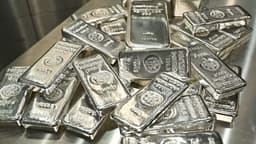Home / Business and Economy / Gold Prices Surge Past $4,000 as Investors Seek Safe Haven
Gold Prices Surge Past $4,000 as Investors Seek Safe Haven
12 Oct
Summary
- Gold prices hit a historic high of $4,000 per ounce
- Economic uncertainty and geopolitical tensions drive investors to gold
- Experts recommend 7-15% allocation to gold in diversified portfolios

On October 12, 2025, gold prices have reached a historic high, surpassing the $4,000 per ounce mark for the first time. This remarkable milestone is the result of a sustained rally in the precious metal, fueled by growing economic uncertainty and geopolitical tensions around the world.
The gold rush has been one of the biggest stories in the financial markets this year, as investors seek to protect their wealth by investing in the traditional safe-haven asset. The precious metal's reputation as an inflation hedge and a hedge against broader macroeconomic and political risks has made it an increasingly attractive investment option.
Interestingly, the surge in gold prices has occurred alongside a rise in stock prices, which are also near record highs. This unusual twist has led investment professionals to weigh in on the optimal allocation of gold in diversified portfolios.




